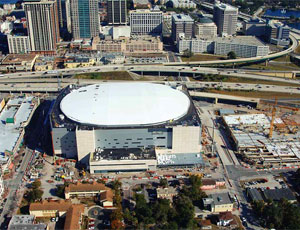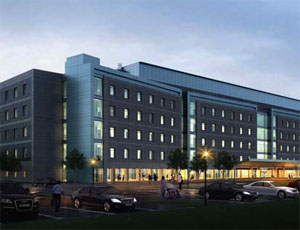...during 2010 is funding from the American Recovery and Reinvestment Act of 2009, aka “the stimulus.” While many had hoped that it would’ve had a bigger impact during 2009, there is strong consensus that it will be felt significantly during 2010.


Jennifer Coskren, economist with McGraw-Hill Construction, publisher of Southeast Construction, forecast earlier this year that the industry would begin to experience the effects of increased ARRA funding.
“We’re looking for the stimulus funds to continue to have a positive impact on street and bridge work, environmental public works and public buildings,” Coskren says. “Water and sewer construction are both expected to have a strong year in 2010, as healthy funding for the State Revolving Funds finally make their way to the project site. On the transportation side, it’s expected that the peak of the stimulus spending will occur in mid-2010.”
Luther Cochrane, CEO of BE&K Building Group of Charlotte, N.C., agrees.
“(The stimulus) is going to start to make a difference in 2010, if you do that type of project,” he says. “It was a little slow getting into circulation. But I think it took 2009 to figure out how to put the money to work.”
The stimulus boosted a long-awaited project in Tampa, for example. The state of Florida used $100 million in ARRA funds to get moving on the $400-million Interstate 4/Selmon Crosstown Expressway Connector. The Florida Dept. of Transportation reported work on that project began in January.
The much-publicized granting of funds for high-speed rail in late January was another example of a future stimulus boost. Florida received much of the attention with President Obama’s visit to the state to dole out $1.25 billion in stimulus funds for a Tampa-Orlando rail line.
With Florida facing a $1.25-billion funding gap for the Tampa-Orlando line project, however, it’s uncertain when the impact of the project will actually be felt.
North Carolina also received a sizable sum, $545 million, to improve connections on the existing routes between Charlotte and Raleigh-Durham and make other infrastructure enhancements.
And while some debate the impact of the stimulus on construction so far, Georgia AGC’s Dunham says the current situation would be even worse without it.
“If it wasn’t for that (stimulus) work, we’d really have a collapse,” he adds. “Part of the gameplan of putting stimulus dollars out there was to create jobs. I think they’ve found that that first infusion of stimulus money was just the starting point. Some more could be needed.”
Increased Bidders, Decreased Costs Even though there is activity, contractors are desperate, and that means owners are finding some pleasing bid results.
“The public works market in the Southeast is surprisingly robust,” Mark Accetturo, president of Reynolds Inc.’s heavy-civil division in Fairburn, Ga., says in an e-mail.
“We expect a modest improvement in public works volume in 2010. The factor controlling this improvement is...





Post a comment to this article
Report Abusive Comment